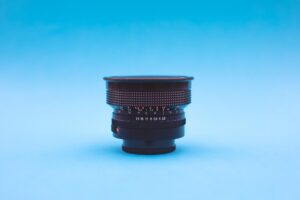What are tilt-shift lenses? These specialized lenses allow photographers to control perspective and depth of field by tilting and shifting the lens relative to the camera’s image sensor.
In this comprehensive guide, you’ll discover how these lenses work, why they’re a game-changer for certain types of photography, and how to use them effectively.
Whether you’re into architecture, landscapes, or just love experimenting, keep reading to unlock new creative possibilities.
| Feature | Description |
|---|---|
| What It Is | A specialized lens allowing tilt and shift movements relative to the image sensor. |
| Key Benefits | Greater control over depth of field and perspective, ideal for architecture and landscape photography. |
| Popular Brands | Canon (TS-E), Nikon (PC-E) |
| Creative Uses | Miniature effect, selective focus, and more. |
| Learning Curve | Moderate to high; requires practice. |
What is a Tilt-Shift Lens?
A tilt-shift lens is not your average camera lens. It’s engineered to allow the optics to be tilted and/or shifted in relation to the camera’s image sensor.
This unique feature grants photographers unparalleled control over the perspective and depth of field in their photos.
How It Differs From Regular Lenses
Unlike standard lenses, tilt-shift lenses are designed to project an image circle that is much larger than traditional lenses. This allows the shift feature to work effectively without vignetting.
How Do Tilt-Shift Lenses Work?
Mechanics of Tilt and Shift
- Tilt: Allows you to change the position of the lens’s plane of focus so it’s not perfectly parallel to the image sensor. This can create effects like having one side of the scene in focus while the other is blurred.
- Shift: Enables the lens’s optics to move in relation to the image sensor, useful for photographing tall subjects without tilting the camera.
Note: Both tilt and shift can be used independently or in combination, depending on the creative or technical needs of your shot.
Relation to the Camera’s Image Sensor
The tilt-shift lens interacts directly with the camera’s image sensor to produce its unique effects.
For a deeper dive into how camera lenses work in general, you might find our article how do camera lenses work useful.
The Dual Powers: Tilt Control vs Shift Control
What Does Tilt Control Do?
Tilt control allows you to change the orientation of the plane of focus.
This means you can have one side of your scene in sharp focus while the other side is blurred, creating a unique depth of field.
This feature is particularly useful for:
- Selective Focus: Highlighting a specific subject while blurring out distractions.
- Creative Effects: Producing dreamy landscapes or dramatic portraits.
- Depth of Field Control: Achieving a greater or shallower depth of field without changing the aperture.
Pro Tip: Mastering tilt control can take some practice. It’s a powerful tool for controlling the depth of field, especially in complex scenes.
What Does Shift Control Do?
Shift control, on the other hand, allows you to adjust the position of the subject in the image area without moving the camera back.
This is particularly helpful in:
- Architecture Photography: Correcting the perspective of tall buildings.
- Landscape Photography: Adjusting the horizon without tilting the camera.
- Product Photography: Capturing objects from a specific angle without distortion.
Why Use a Tilt-Shift Lens?
1. Perspective Control
One of the most significant advantages of using a tilt-shift lens is the ability to control perspective. This is especially useful when photographing tall buildings, where you often need to correct converging vertical lines.
With a tilt-shift lens, you can keep the camera level and use the shift function to capture the entire building, eliminating the need for post-processing corrections. This results in more natural-looking and professional photos.
2. Selective Focus
The tilt function allows you to manipulate the plane of focus, enabling you to highlight a specific subject while blurring out the rest of the scene.
This selective focus is excellent for creating dramatic portraits or drawing attention to a particular element in a landscape. It adds a layer of storytelling to your photography that’s hard to achieve with regular lenses.
3. High-Quality Optics
Tilt-shift lenses are generally not cheap, but you get what you pay for in terms of optical quality. These lenses are designed to produce sharp, high-resolution images with minimal distortion.
This makes them ideal for photographers who are particular about image quality, whether you’re shooting for a client or for your portfolio.
4. Flexibility
While tilt-shift lenses are often associated with architecture and landscape photography, their applications are far more diverse.
You can use them for product photography to control the plane of focus and highlight specific details. They’re also useful for creative effects, such as making a life-sized scene appear miniature.
The versatility of these lenses makes them a valuable addition to any photographer’s toolkit.
5. Unique Creative Effects
Tilt-shift lenses open up a world of creative possibilities that are difficult to replicate with standard lenses or in post-processing.
From creating a “miniature world” effect to achieving a dreamy, ethereal look in your photos, the creative effects are limited only by your imagination.
Note: If you’re new to camera lenses and wondering which one is right for you, our article what camera lens do I need? might offer some valuable insights.
Compatibility and Brands
Are Tilt-Shift Lenses Compatible with All Cameras?
Tilt-shift lenses are specialized pieces of equipment, and they’re not universally compatible with all camera bodies.
Most major camera manufacturers like Canon and Nikon offer tilt-shift lenses specifically designed for their DSLRs and mirrorless systems.
Before investing, it’s essential to check whether the lens is compatible with your camera model. For more information on lens compatibility, you can read our article on are camera lenses universal.
Popular Brands and Their Designations
When it comes to tilt-shift lenses, the leading brands are:
- Canon: Designated as TS-E lenses.
- Nikon: Designated as PC-E lenses.
Both brands offer a range of focal lengths and features, so you have options depending on your specific needs.
Creative Effects and Applications
Unique Effects like Miniature Scenes
One of the most captivating effects you can achieve with a tilt-shift lens is the miniature scene. By tilting the lens, you can create a shallow depth of field that makes life-sized objects appear like miniatures.
This effect is often used in landscape and cityscape photography to create whimsical, toy-like scenes.
Other Creative Uses in Photography
- Selective Coloring: By controlling the plane of focus, you can isolate subjects for post-processing effects like selective coloring.
- Stitched Panoramas: The shift function allows you to take multiple shots side by side, perfect for creating high-resolution panoramas without the need for complicated post-processing.
Practical Guide: How to Use a Tilt-Shift Lens
Step-by-Step Guide for Beginners
- Mount the Lens: Attach the tilt-shift lens to your camera securely.
- Choose the Movement: Decide whether you’ll be using tilt, shift, or both.
- Frame Your Shot: Compose your image in the viewfinder or on the LCD screen.
- Adjust the Lens: Use the lens knobs to tilt or shift the lens as needed.
- Focus: Manually focus the lens to get your subject sharp.
- Take a Test Shot: Always take a test shot to check the focus and exposure.
- Review and Adjust: Look at your test shot and make any necessary adjustments.
Common Mistakes to Avoid
- Overusing the Effects: Less is often more when it comes to tilt-shift photography.
- Ignoring the Basics: Good composition and exposure are still crucial.
- Not Practicing Enough: Tilt-shift photography has a learning curve, so practice is essential.
Conclusion
Summary of Key Points
In this comprehensive guide, we’ve explored the fascinating world of tilt-shift lenses, covering everything from their mechanics to their myriad applications in photography. Here’s a quick recap:
- What They Are: Tilt-shift lenses are specialized lenses that allow for tilt and shift movements, giving photographers unparalleled control over perspective and depth of field.
- Why Use Them: These lenses offer unique creative effects, high-quality optics, and are particularly beneficial for architecture and landscape photography.
- How to Use: Mastering a tilt-shift lens requires understanding its mechanics and practicing its use. From framing your shot to adjusting the lens, each step is crucial for achieving the desired effect.
FAQs
What’s the Upside of Using a Tilt-Shift Lens?
Tilt-shift lenses offer unparalleled control over perspective and depth of field, making them ideal for specialized photography like architecture and landscapes.
What Are the Drawbacks of a Tilt-Shift Lens?
The main disadvantages include their high cost, complexity, and the time needed to master their use. They’re not ideal for quick or spontaneous photography.
How Do Shift and Tilt in Lenses Differ?
Shift adjusts the lens parallel to the image sensor, useful for correcting perspective. Tilt changes the lens’s plane of focus, allowing for creative depth of field effects.
Why Do Tilt-Shift Lenses Come with a High Price Tag?
These lenses are specialized equipment with intricate mechanics and high-quality optics, which contribute to their higher cost compared to standard lenses.
Is a Tilt-Shift Lens Necessary?
A tilt-shift lens is not a necessity for every photographer but can be invaluable for those specializing in architecture, landscape, or creative photography.
What Are the Primary Applications of Tilt-Shift Photography?
The three main uses are architecture photography for perspective control, landscape photography for enhanced depth of field, and creative photography for effects like miniature scenes.
Does Shifting the Lens Impact Image Quality?
Lens shift generally does not degrade image quality, but improper use can lead to vignetting or other distortions.
What Capabilities Does a Tilt-Shift Lens Offer?
A tilt-shift lens allows for tilt and shift movements, providing control over perspective and depth of field. They often have high-quality optics and are manually focused.
Can Tilt-Shift Lenses Be Used with Mirrorless Cameras?
Yes, tilt-shift lenses can be used on mirrorless cameras, but you’ll need to ensure compatibility and may require an adapter for certain models.
Final Thoughts
Tilt-shift lenses open up a realm of creative possibilities that are hard to achieve with standard lenses. Whether you’re a professional photographer looking to add a new dimension to your work or a hobbyist eager to experiment, a tilt-shift lens can be a game-changing addition to your toolkit.
Note: As with any specialized equipment, there’s a learning curve involved. Don’t be discouraged by initial challenges; practice makes perfect.
For those interested in further expanding their lens knowledge or learning more about lens quality, our article on how camera lenses are made offers an insightful read.
Thank you for joining us on this in-depth journey into the world of tilt-shift lenses. We hope this guide has been informative and inspiring, equipping you with the knowledge you need to take your photography to the next level.



![Read more about the article Should I Buy Used Camera Lenses? Insights, Advice & Recommendations [2023]](https://photographyexplorer.com/wp-content/uploads/2023/08/Should-I-Buy-Used-Camera-Lenses-300x200.jpg)




